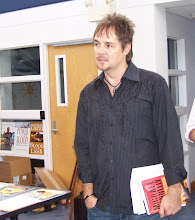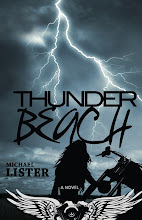
The act of creation is often chaotic.
As Marilyn Ferguson said, “The creative process requires chaos before form emerges.”
Artists work with chaos—a truth embodied in Sharon Hubbard’s observation that “The creation of true art requires some mysterious innate ability to thrive in chaos.”
Art is an attempt at creating order out of chaos—or at the very least a way of searching for and assigning meaning to the chaos itself.
There’s a random, mysterious, sometimes chaotic element to the universe that I think those of us who spend our time engaged in creating art are particularly sensitive to. Perhaps that’s why chaos theory so appeals to me, and why one of my favorite sayings is: “God created order out of chaos, but sometimes the chaos shows through.” This is also why, for me, any religion, philosophy, or worldview that claims to explain everything is simplistic, shortsighted, and suspect (seriously lacking in credibility).
In dealing with the chaos of existence, there seems to be two approaches—those of us who welcome, even invite, it in, and those who attempt, with all the defensiveness they can muster, to keep it at bay.
My own approach is one of openness—honoring the random, the chaotic, the humbling that reminds me just how not in control I really am—all the while careful to avoid manufactured drama and the destructiveness of unnecessary anarchy. But regardless of the approach, the artist and spiritually open person can’t afford not to embrace the whirlwind.
Like everything else, there are counterfeits for chaos, and some people get addicted to the rush and so continually create circumstances so that their lives resemble a Tilt-A-Whirl ride. Some artists suck on chaos like it’s a crack pipe, and so recklessly and routinely set fire to their own lives.
Guido Contini, whose story is told in Rob Marshall’s musical, “Nine,” appears to be just such an artist—a gifted writer/director who’s lost all control of his life and appetites. In fact, at one point his estranged wife, Luisa, tells him that that’s all he is—an appetite.
Guido Contini (Daniel Day-Lewis), famous Italian film director, has turned forty and faces a double crisis: he has to shoot a film for which he can’t write the script, and his wife of twenty years, the film star Luisa del Forno (Marion Cotillard), may be about to leave him. As it turns out, it is the same crisis.
Luisa's efforts to talk to him seem to be drowned out by voices in his head: voices of women in his life, speaking through the walls of his memory, insistent, flirtatious, irresistible, potent. Women Guido has loved, and from whom he has derived the entire vitality of a creative life, now as stalled as his marriage—his mistress (Penelope Cruz), his film star muse (Nicole Kidman), his confidant and costume designer (Judi Dench), an American fashion journalist (Kate Hudson), the prostitute from his youth (Fergie) and his mother (Sophia Loren).
As Guido struggles to find a story for his film, he becomes increasingly preoccupied—his interior world sometimes becoming indistinguishable from the objective world—and his producer suggests he make a musical, an idea which itself veers off into a feminine fantasy of extraordinary vividness.
“Nine” is the film adaptation of a musical inspired by Fellini’s mesmerizing classic, “81/2.” Ordinarily, I’m not much on musicals, but because of the subject matter here and its connection to Fellini and “81/2,” I wanted to see “Nine” from the moment I heard about it. And the film did not disappoint. I expected to like the story in spite of the musical intrusions, but found myself really responding to a few of the numbers, and appreciating the masterful way Marshal stitched them into the seam of the narrative. I really enjoyed the musical performance by Fergie, which is not surprising, but what I found shocking was just how talented a singer Kate Hudson is. But it’s not the musical but the dramatic performances that make the movie something special, and though all are particularly strong, Daniel Day-Lewis is again amazing, and Marion Cotillard is absolutely heartbreaking.
Being creative involves chaos. But nothing is as chaotic as the frustration that results from the chaos in an artist’s life becoming so out of balance that it no longer allows for creativity. Few films embody these truths as dramatically and powerfully as “81/2” and “Nine.”
Saul Bellow said that “Art is the achievement of stillness in the midst of chaos”—something Guido has yet to learn.
In life, as in art, there’s real skill involved in managing chaos. Of course, chaos can’t be controlled. I’m not suggesting it can. Maybe it can’t even be managed, but we can. We can manage ourselves, our responses.
Maybe managing chaos is like trying to make a movie without a script or maybe it’s an altogether absurd notion in the way “talking about love is like dancing about architecture.” And in the end, that’s what “81/2” and “Nine” and life are all about—love. Love that drives us to create. Create connections—with our words, our bodies, our beings, our art—and, in doing so, touch the void, approach the whirlwind, open our belts and minds and hearts to chaos. A chaos that, depending on how we respond, can lead to creation or destruction—to art, to a more artful life, or to even more chaos.















